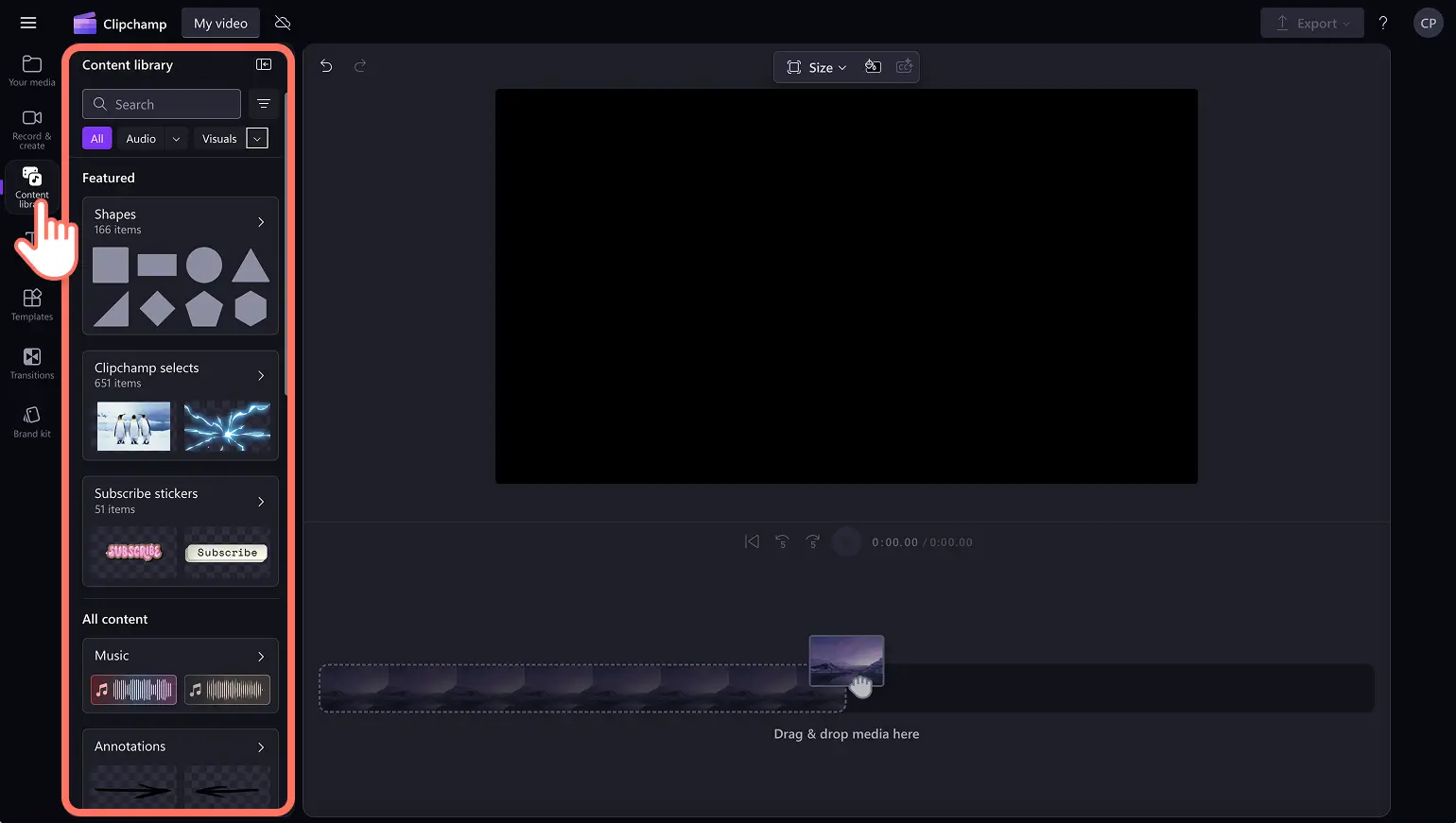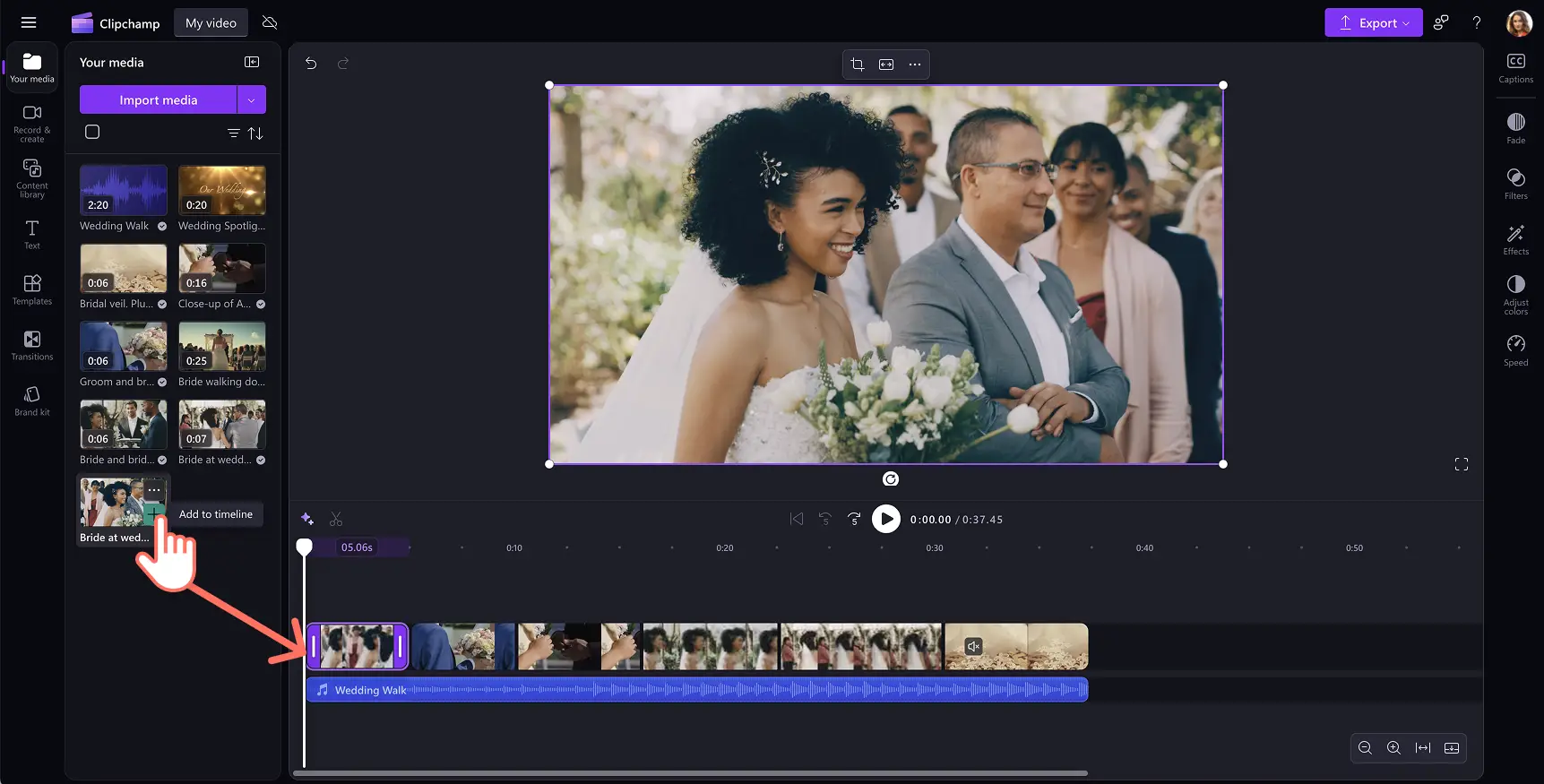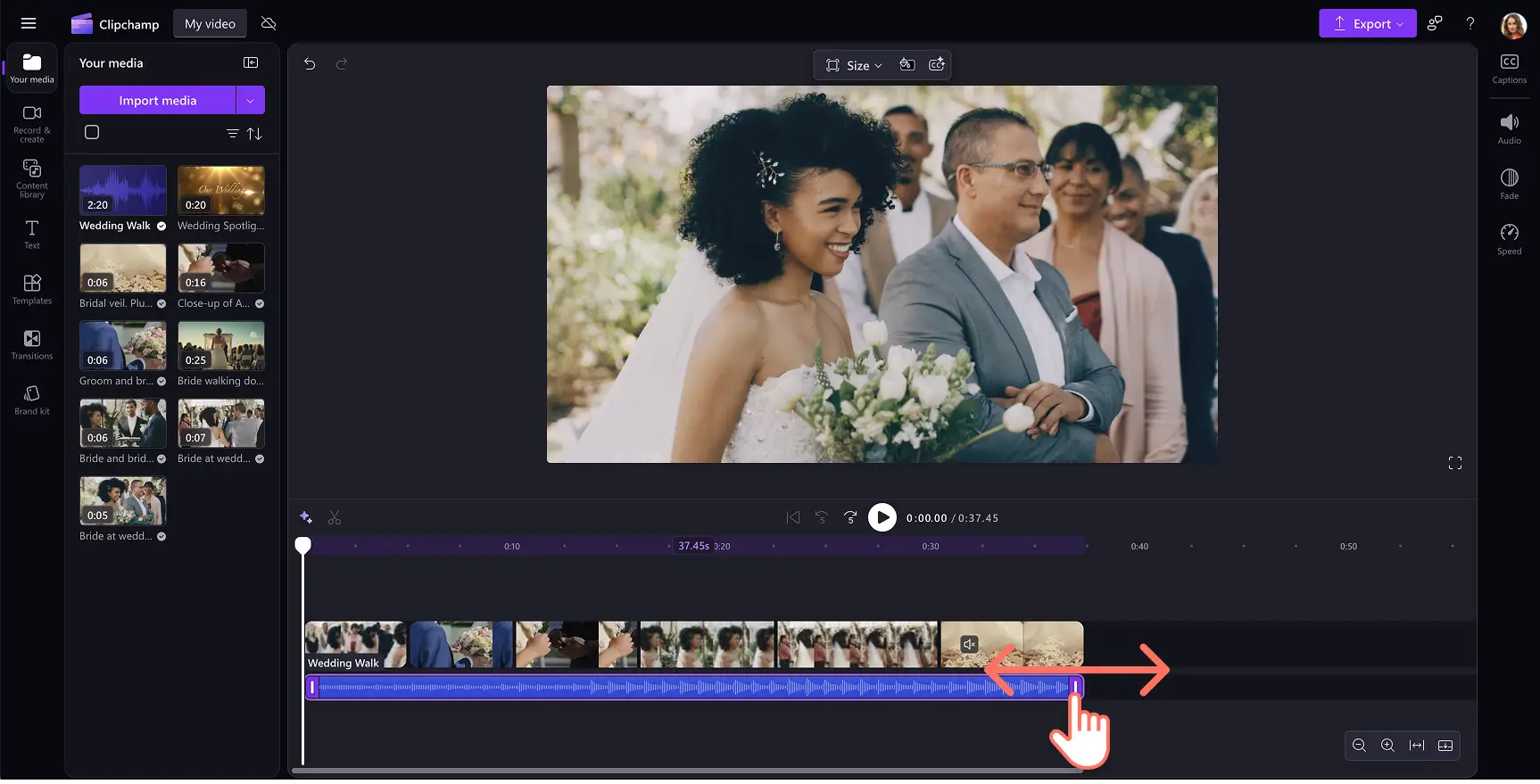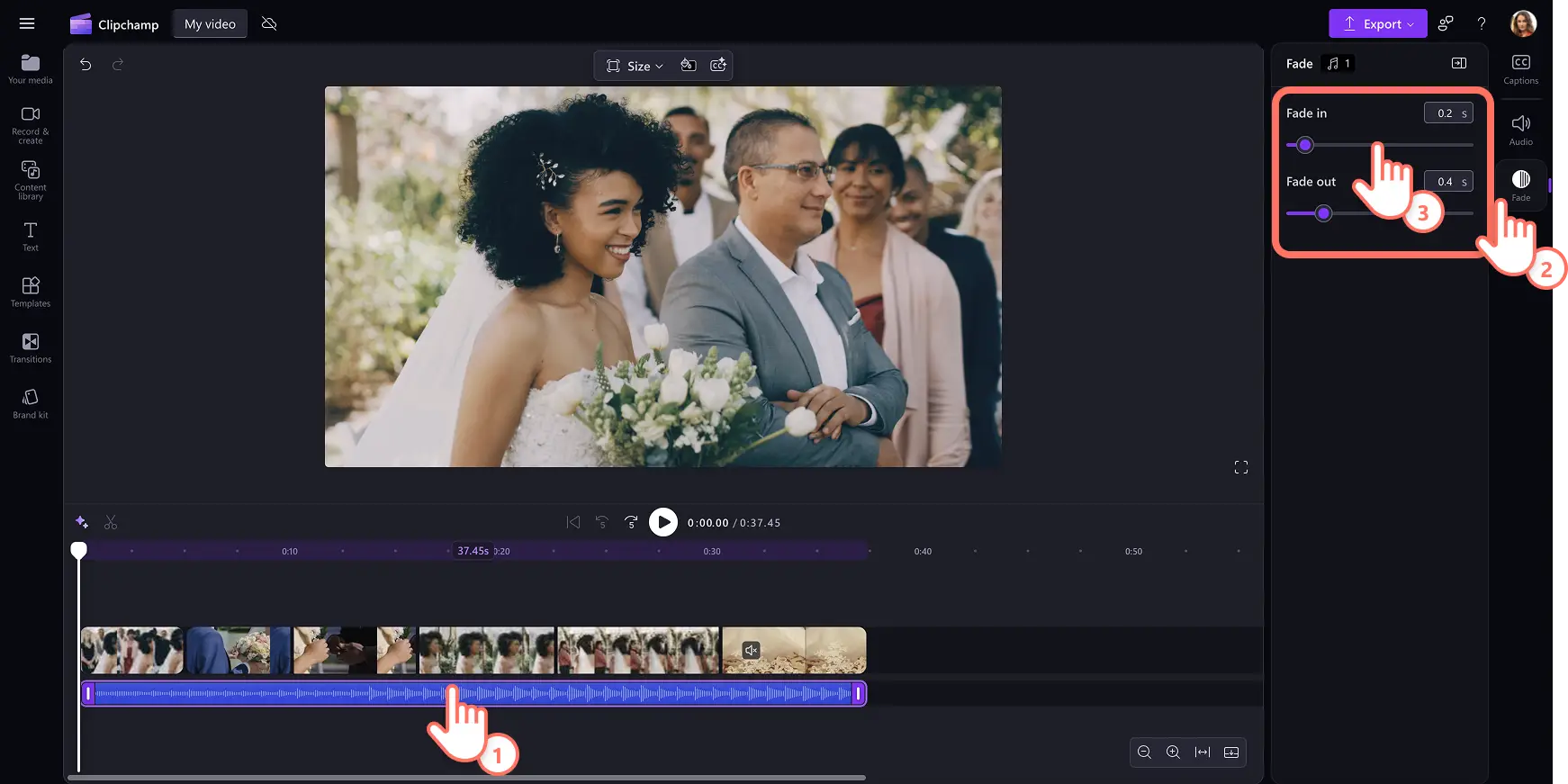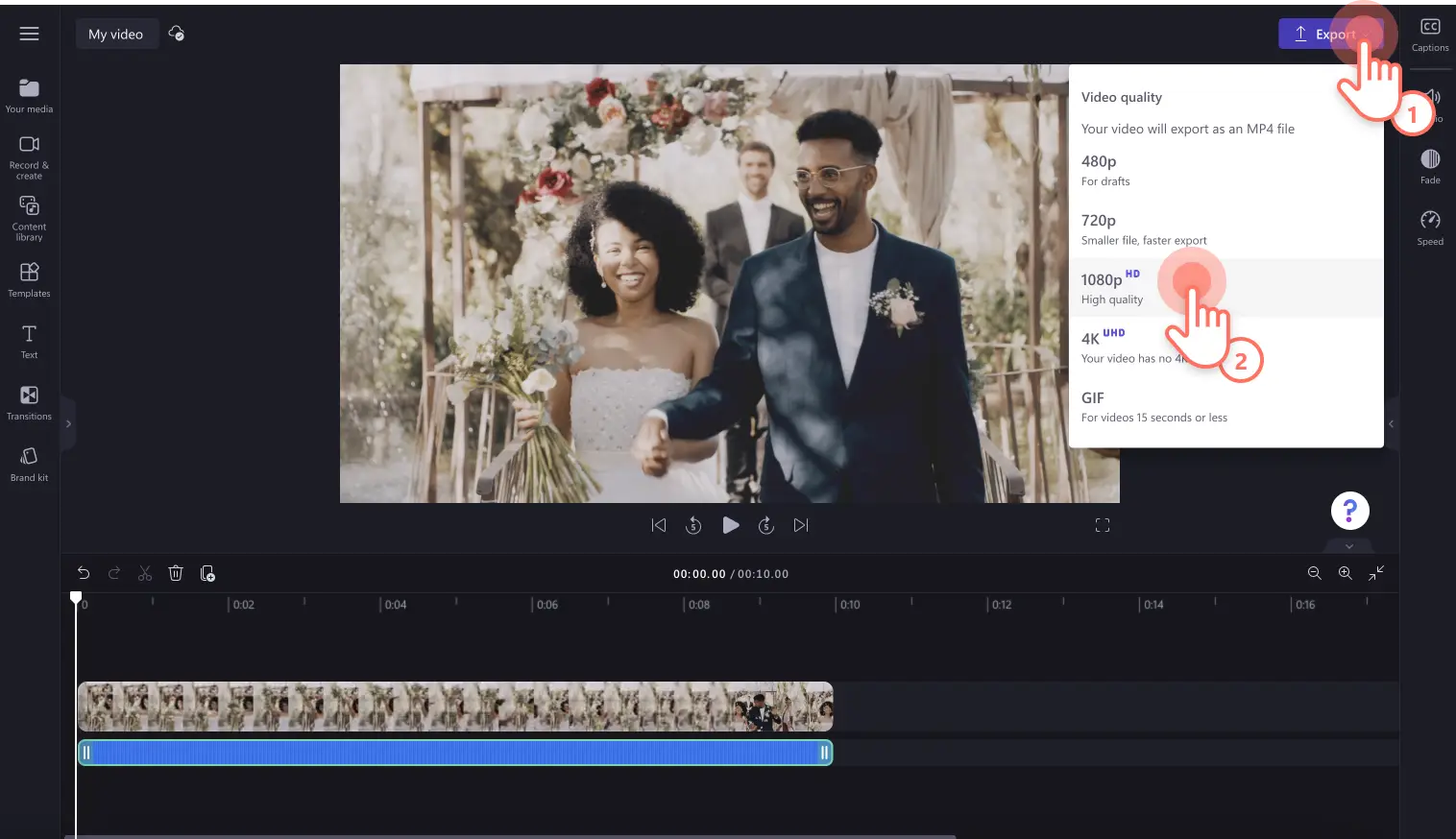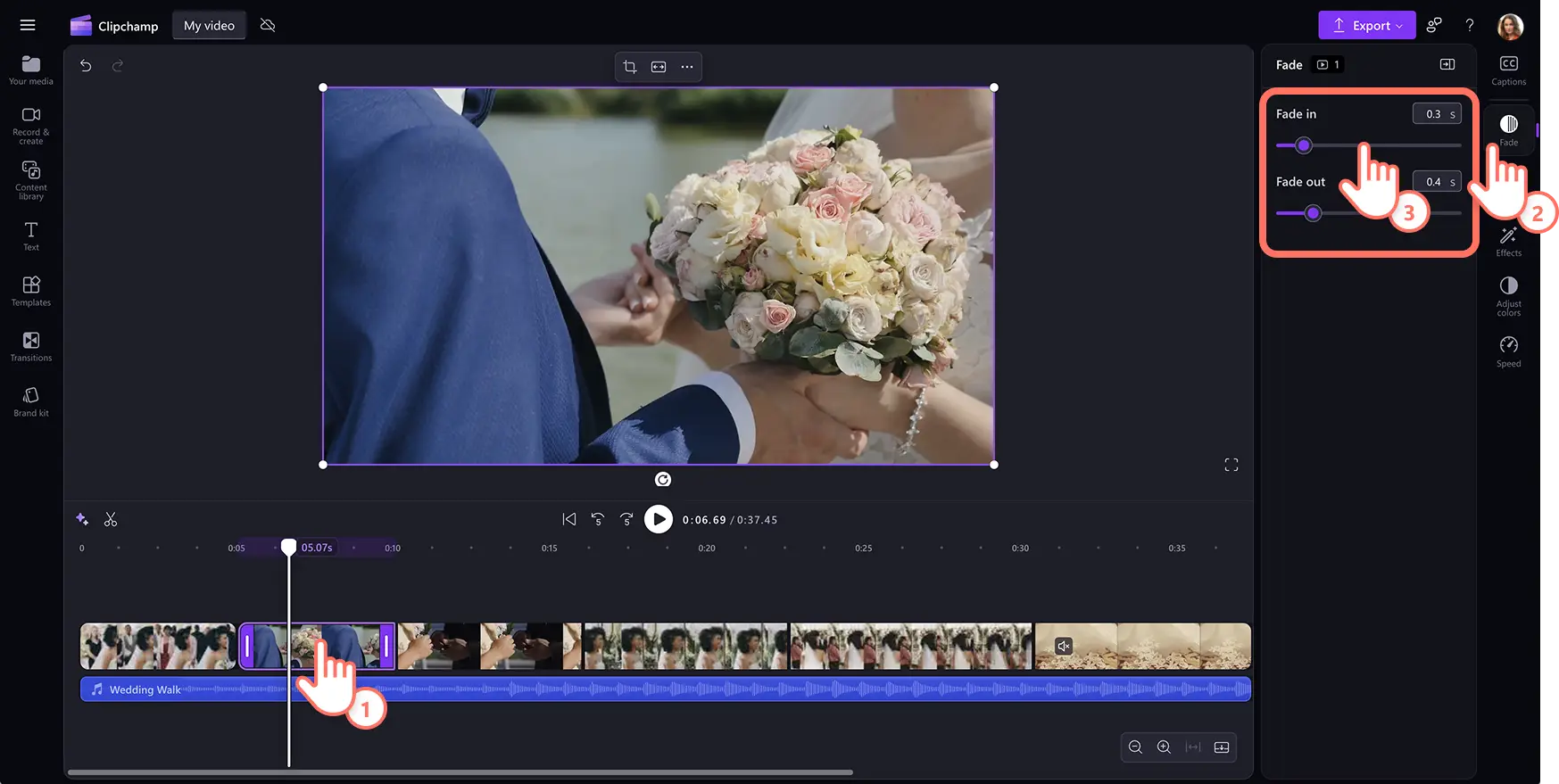Heads up! The screenshots in this article are from Clipchamp for personal accounts. The same principles apply to Clipchamp for work and school accounts.
On this page
Fades are a powerful video editing effect that can change the mood of a video. Adding fades to the beginning or end of a scene is a creative way to improve the flow of the content. They are impactful when applied to audio as well as video. Some video editors use fading in a sound or video to create suspense and use fading out to shift focus from one character's narrative to another.
Read on to learn how to fade in and out music and videos, while exploring ideas on how you can add fade transitions to social media videos with Clipchamp video editor.
How to fade in and out of music in videos
Step 1. Import videos or select stock footage
To import your own videos, photos, and audio, click on the import media button in the your media tab on the toolbar to browse your computer files, or connect OneDrive.
You can also use free stock media like video clips, video backgrounds, and stock music. Click on the content library tab on the toolbar and click on the visuals drop down arrow, then select videos, photos, or backgrounds. If you're looking for stock music, click on the audio drop down arrow, then click music. Search through the different stock categories using the search bar as well.
Drag and drop the audio file and video onto the timeline or click on the + button. The audio will appear under the video if you have other assets already on the timeline.
Step 2. Trim your audio and add fades
If the audio file is too long for your video, simply trim the duration. Click on the audio file on the timeline so it’s highlighted, then move the handles to the left of the timeline to trim the audio length. This will reduce the length of your music. If the music is too short, drag the handles to the right to make the audio file longer.
To fade in and out audio, click on the fade tab on the property panel. To add a fade in to your music, drag the fade in slider to the right. To add a fade out to your audio, drag the fade out slider to the right.
Step 3. Preview and save the video
Before saving the video, make sure to preview by clicking on the play button. When you’re ready to save, click on the export button and select a video resolution.
How to fade in and out of videos
Import your own videos or add stock media to the timeline.
Select the video clip and click on the fade tab on the property panel.
Drag the fade in slider and fade out slider to adjust the length of the video effect.
Note: you can fade in and out every clip on your timeline to suit the video’s needs. We recommend fading in the first clip and fading out the last clip of the video for a smooth viewing experience.
For more help, take a look at our YouTube tutorial on how to fade in and out video.
Ten ideas to apply fades and transitions to videos
Create mystery in a vlog with fade out transitions.
Build suspense in a short film or movie using a fade in on the first video clip.
Showcase multiple gaming clips like epic fails or game deaths by transitioning into a black fade.
Differentiate between presentation topics and tutorials with fade in and out transitions.
Establish a new focus in narration with the use of fade out transitions.
Show the end of a day, video, or scene with a fading out transition.
Emphasize emotional moments in interviews and mission videos by fading in before the subject speaks.
Transition between flashbacks or dream sequences in cinematic videos with a soft fade to white.
Use fade-ins to introduce a product or logo at the start of marketing and promo videos.
Slow down the pace in travel videos with fades between scenic shots.
Now that you can add fades to music and videos, try adding fade transitions between your video clips next. For more control over sound quality, explore audio editing tools like the Clipchamp audio enhancer.
Create videos today with Clipchamp video editor or download the Clipchamp Windows app.


